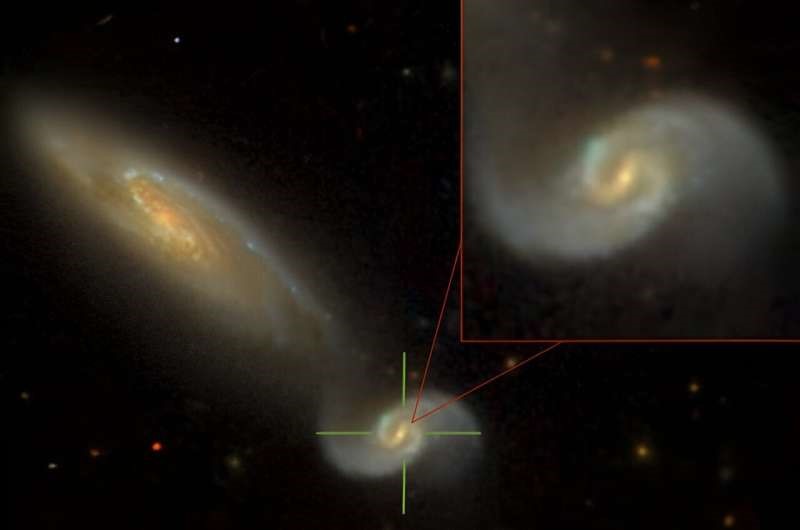Description

Disclaimer: Copyright infringement not intended.
Context
- In a collaborative effort between Syracuse University, the University of Leeds, and high school students in Syracuse, researchers are unraveling the mysteries of supermassive black holes (SMBHs) through the study of Tidal Disruption Events (TDEs).
- TDEs provide a unique opportunity to probe dormant galactic centers, shedding light on the properties of both the engulfed stars and the massive black holes.
Details
Analytical Models:
- Accretion Rate Analysis: Understanding the properties of stars and supermassive black holes involves calculating the accretion rate during TDEs, which provides key signatures of their masses.
- Computational Efficiency: Analytical models, such as the "frozen-in" approximation, offer efficient ways to estimate accretion rates. The CN22 model, introduced in 2022, presents a novel analytical approach that aims to provide more accurate predictions.
Tidal Disruption Events
- Definition: Tidal Disruption Events (TDEs) occur when a star ventures too close to a supermassive black hole (SMBH) or a compact object, experiencing intense tidal forces that tear it apart.
- Discovery: First proposed by Rees in 1988, TDEs gained prominence with the advent of sensitive observational tools in the 21st century.
- Rarity and Detection: While TDEs are predicted to happen once every 10,000 to 100,000 years in a given galaxy, technological advancements, including upcoming observatories like the Vera C. Rubin Observatory, are expected to significantly increase the number of detected TDEs.

How They Work:
- Black Hole Observation Challenge: Black holes, being devoid of their own light, are challenging to observe directly. However, when a star comes into close proximity to a supermassive black hole, the tidal forces tear it apart, creating a luminous accretion disk as it spirals into the black hole.
- Tidal Forces: When a star passes within the tidal radius of a massive object, gravitational forces exerted on the near and far sides of the star vary significantly, causing tidal stretching.
- Tidal Radius: The critical distance from the massive object at which tidal forces overcome the star's self-gravity, leading to disruption.
Observational Signatures:
- Flares of Light: As the stellar debris falls towards the accreting object, it forms an accretion disk, emitting copious amounts of radiation across the electromagnetic spectrum.
- X-ray and UV Emission: High-energy X-rays and ultraviolet radiation characterize TDEs, making them detectable by space-based observatories such as Swift and Chandra.
- Transient Events: TDEs are transient phenomena, typically observable for several months to years, distinguishing them from constant sources.
Properties of TDEs:
- Luminosity Variability: TDEs exhibit a diverse range of luminosity profiles over time, influenced by factors like the black hole mass, accretion rate, and the star's composition.
- Spectral Evolution: Changes in the spectra of TDEs provide insights into the composition of the disrupted star and the accretion processes at play.
TDEs as Probes of Black Holes:
- Black Hole Mass Estimates: The study of TDEs allows astronomers to estimate the mass of the accreting black hole, providing valuable information about the demographics of SMBHs in distant galaxies.
- Spin and Tilt: Observations of TDEs can reveal information about the spin and tilt of black holes, contributing to our understanding of their formation and evolution.
Multi-messenger Astronomy:
- Gravitational Waves: The potential simultaneous detection of gravitational waves and electromagnetic signals from TDEs opens new avenues for multi-messenger astronomy, providing complementary information.

Conclusion
TDEs, characterized by the violent disruption of stars near massive black holes, serve as unique cosmic laboratories, unraveling the mysteries of black hole properties, star dynamics, and the complex interplay of forces in the cosmos.
|
PRACTICE QUESTION
Q. Discuss the significance of Tidal Disruption Events (TDEs) in contemporary astrophysics. (250 Words)
|
















